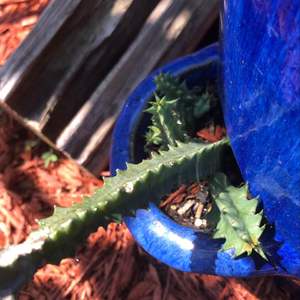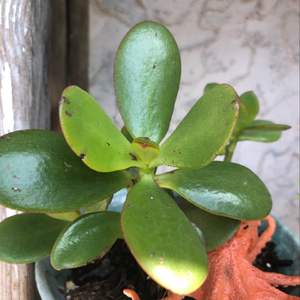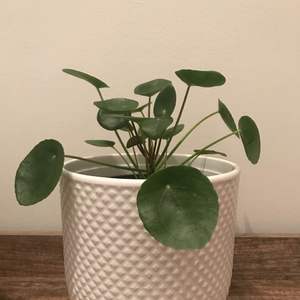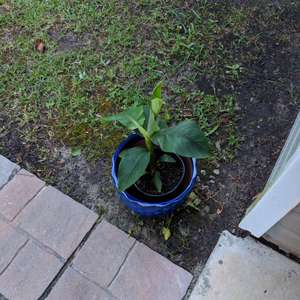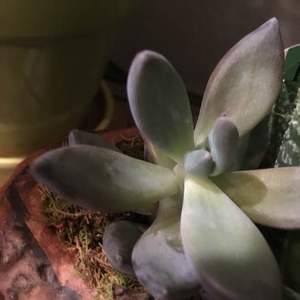文章
Miss Chen
2018年06月07日

Description: This herbaceous perennial plant produces a stem about ½–1' long that often sprawls across the ground or leans against adjacent vegetation. This stem is light green and glabrous. The alternate leaves are up to 2½" long and 2" across; they are orbicular-cordate to cordate, medium green, mostly hairless, and crenate along their margins. While some young leaves are initially pubescent, they later become mostly hairless. The petioles of these leaves are light green and hairless; they are about as long as the leaves. At the base of each petiole, there is a pair of large stipules up to 1" long. These stipules are light green, lanceolate to ovate in shape, and hairless; they have conspicuous narrow teeth along their margins. Individual flowers develop from the axils of the leaves on slender pedicels. These pedicels are up to 4" long; they are erect to ascending, light green, and hairless. The apices of these pedicels are abruptly curved downward so that the flowers are more or less horizontal.
Each flower is about ¾" across, consisting of 5 white rounded petals, 5 light green sepals, a pistil, and inserted stamens. The two lower lateral petals have patches of fine white hairs (or beards) near the throat of the flower, while the lowermost petal has purple veins that function as nectar guides. The nectar spur of the flower is rather short and blunt. The throat of the flower is white, rather than yellow. The sepals are linear-lanceolate in shape and hairless; they are shorter than the petals. The blooming period occurs from mid-spring to early summer, lasting about 1½ months for a colony of plants. There is no noticeable floral scent. If these flowers are cross-pollinated, they will produce ovoid seedpods that are about ¼" in length and glabrous. Later in the year, inconspicuous cleistogamous flowers are produced; they are self-fertile and lack showy petals. At maturity, each seedpod splits open into 3 parts to eject its seeds. These seeds are about 2 mm. across, globoid in shape, and brown. The root system produces rhizomes and fibrous secondary roots. This plant can form clonal offsets through its rhizomes. It sometimes forms colonies.

Cultivation: The preference is light shade to partial sun, moist to mesic conditions, and a rich loamy soil. This species doesn't invade lawns because its stems are too long. It is relatively easy to cultivate in gardens.
Range & Habitat: The native Striped White Violet is fairly common in the southern half of Illinois, but in the northern half of the state it is uncommon or absent (see Distribution Map). Habitats include moist to mesic deciduous woodlands, banks of rivers and streams in shaded areas, open woodlands, woodland borders, moist meadows, shrubby hedges, and ditches. This violet is found in both high quality natural areas and more degraded sites that have a history of minor to moderate disturbance.

Faunal Associations: The nectar and pollen of the flowers attract bees, including bumblebees, long-horned bees (Synhalonia spp.), mason bees (Osmia spp.), and Andrenid bees (Andrena spp.). One of these species, Andrena violae (Violet Andrenid Bee), is a specialist pollinator (oligolege) of violets (Viola spp.). Sometimes the Giant Bee Fly (Bombylius major), butterflies, and skippers visit the flowers for nectar, but they are less effective at pollination. Other insects use the leaves and other parts of violets as sources of food. These insects include the larvae of gall flies, the larvae of sawflies, the caterpillars of various moths, the caterpillars of Fritillary butterflies, aphids, and others; see the Insect Table for a list of these species. The seeds of violets are distributed to some extent by ants because of their oily coatings. Some upland gamebirds and small rodents eat the seeds to a limited extent, including the Mourning Dove, Ruffed Grouse, Bobwhite Quail, Wild Turkey, and White-footed Mouse. In addition, the foliage of violets is eaten to a limited extent by the Cottontail Rabbit, while their rhizomes are eaten by the Eastern Chipmunk.
Photographic Location: A wooded area of Meadowbrook Park in Urbana, Illinois; a flower garden in Urbana, Illinois; a deciduous woodlands at Goll's Woods Nature Preserve in NW Ohio; a deciduous woodlands at the Portland Arch in west-central, Indiana.

Comments: Striped White Violet (Viola striata) is a rather tall and attractive species that blooms later than most violets (Viola spp.). It also has a longer than average period of bloom than most violets because its flowers are produced as the stems become longer. There are several species of violets in Illinois that produce white flowers. The Striped White Violet belongs to a group of violets in which the leaves and flowers are produced from stems – the other violets belong to a group in which their flowers and leaves are produced directly from their root systems. The Striped White Violet has unusually large stipules (up to 1" long) at the bases of its petioles; the margins of these stipules have abundant fringe-like teeth. These two characteristics separate this species from other white-flowered violets in Illinois. A similar species, the Canada Violet (Viola canadensis), produces white flowers from stems, but its stipules are quite small and they lack conspicuous teeth along their margins. A form of the Common Blue Violet (Viola pratincola alba) also produces white flowers, but this is a stemless violet. Other common names for Viola striata are Cream Violet and Pale Violet.
Each flower is about ¾" across, consisting of 5 white rounded petals, 5 light green sepals, a pistil, and inserted stamens. The two lower lateral petals have patches of fine white hairs (or beards) near the throat of the flower, while the lowermost petal has purple veins that function as nectar guides. The nectar spur of the flower is rather short and blunt. The throat of the flower is white, rather than yellow. The sepals are linear-lanceolate in shape and hairless; they are shorter than the petals. The blooming period occurs from mid-spring to early summer, lasting about 1½ months for a colony of plants. There is no noticeable floral scent. If these flowers are cross-pollinated, they will produce ovoid seedpods that are about ¼" in length and glabrous. Later in the year, inconspicuous cleistogamous flowers are produced; they are self-fertile and lack showy petals. At maturity, each seedpod splits open into 3 parts to eject its seeds. These seeds are about 2 mm. across, globoid in shape, and brown. The root system produces rhizomes and fibrous secondary roots. This plant can form clonal offsets through its rhizomes. It sometimes forms colonies.

Cultivation: The preference is light shade to partial sun, moist to mesic conditions, and a rich loamy soil. This species doesn't invade lawns because its stems are too long. It is relatively easy to cultivate in gardens.
Range & Habitat: The native Striped White Violet is fairly common in the southern half of Illinois, but in the northern half of the state it is uncommon or absent (see Distribution Map). Habitats include moist to mesic deciduous woodlands, banks of rivers and streams in shaded areas, open woodlands, woodland borders, moist meadows, shrubby hedges, and ditches. This violet is found in both high quality natural areas and more degraded sites that have a history of minor to moderate disturbance.

Faunal Associations: The nectar and pollen of the flowers attract bees, including bumblebees, long-horned bees (Synhalonia spp.), mason bees (Osmia spp.), and Andrenid bees (Andrena spp.). One of these species, Andrena violae (Violet Andrenid Bee), is a specialist pollinator (oligolege) of violets (Viola spp.). Sometimes the Giant Bee Fly (Bombylius major), butterflies, and skippers visit the flowers for nectar, but they are less effective at pollination. Other insects use the leaves and other parts of violets as sources of food. These insects include the larvae of gall flies, the larvae of sawflies, the caterpillars of various moths, the caterpillars of Fritillary butterflies, aphids, and others; see the Insect Table for a list of these species. The seeds of violets are distributed to some extent by ants because of their oily coatings. Some upland gamebirds and small rodents eat the seeds to a limited extent, including the Mourning Dove, Ruffed Grouse, Bobwhite Quail, Wild Turkey, and White-footed Mouse. In addition, the foliage of violets is eaten to a limited extent by the Cottontail Rabbit, while their rhizomes are eaten by the Eastern Chipmunk.
Photographic Location: A wooded area of Meadowbrook Park in Urbana, Illinois; a flower garden in Urbana, Illinois; a deciduous woodlands at Goll's Woods Nature Preserve in NW Ohio; a deciduous woodlands at the Portland Arch in west-central, Indiana.

Comments: Striped White Violet (Viola striata) is a rather tall and attractive species that blooms later than most violets (Viola spp.). It also has a longer than average period of bloom than most violets because its flowers are produced as the stems become longer. There are several species of violets in Illinois that produce white flowers. The Striped White Violet belongs to a group of violets in which the leaves and flowers are produced from stems – the other violets belong to a group in which their flowers and leaves are produced directly from their root systems. The Striped White Violet has unusually large stipules (up to 1" long) at the bases of its petioles; the margins of these stipules have abundant fringe-like teeth. These two characteristics separate this species from other white-flowered violets in Illinois. A similar species, the Canada Violet (Viola canadensis), produces white flowers from stems, but its stipules are quite small and they lack conspicuous teeth along their margins. A form of the Common Blue Violet (Viola pratincola alba) also produces white flowers, but this is a stemless violet. Other common names for Viola striata are Cream Violet and Pale Violet.
0
0
文章
Miss Chen
2018年06月07日

Description: This herbaceous perennial plant consists of a small rosette of basal leaves (usually 3 or more), from which one or more stems up to 1' long may develop. These stems are either hairless or pubescent in longitudinal lines. The blade of each basal leaf is up to 3" long and 2½" across; at its base, there is a stout petiole up to 3" long. The petioles can be hairless or sparingly pubescent. The basal leaves are orbicular-cordate or oval-cordate, crenate-dentate along the margins, and palmately veined. This variety of Viola pubescens has less hairy leaves than the typical variety; the upper surface of each leaf is hairless, while the lower surface is either hairless or sparsely pubescent along the major veins. The cauline leaves alternate along the stems; they are similar to the basal leaves, but smaller in size. There are fairly large stipules where the petioles join the stems; these stipules are lanceolate-ovate. The flowers develop from the axils of cauline leaves; they do not occur on separate stalks from the rootstock.
Each flower is about ¾" across, consisting of 5 rounded yellow petals and 5 light green sepals. The beardless lower petal has prominent purple veins toward its base. Each of the 2 lateral petals has a beard at its base consisting of a small tuft of white hairs; sometimes there are a few purple veins outside of each beard. The 2 upper petals are beardless and they usually lack any darker veins. Each flower occurs at the apex of an individual stalk that is as long as the leaves and their petioles; this stalk nods downward at its apex, causing the flower to face outward from the stem. The floral stalk is either hairless or pubescent in lines along its length. The blooming period occurs from mid- to late spring and lasts about a month. There is no noticeable floral scent. Later, cleistogamous flowers are produced that lack petals; they can produce fertile seeds without insect pollination. Fertile flowers are replaced by ovoid seed capsules about ½-¾" in length. These seed capsules eventually turn brown and divide into 3 segments; they can eject their seeds up to a few feet from the mother plant. The small seeds are globoid and brown. The root system consists of scaly rhizomes, from which vegetative offsets can develop. This plant occasionally forms colonies.
Cultivation: The preference is light shade to partial sun, moist to mesic conditions, and a rich loamy soil with abundant organic matter. Medium shade is tolerated later in the year after the trees develop their leaves. The foliage is little bothered by disease.

Range & Habitat: This native violet is common in nearly all areas of central and northern Illinois; it is slightly less common in southern Illinois (see Distribution Map). Habitats include moist to mesic deciduous woodlands, woodland borders, and thickets. Unlike Viola pratincola (Common Blue Violet), Common Yellow Violet (Viola pubescens eriocarpa) is not often observed in yards and other disturbed areas.
Faunal Associations: The nectar and pollen of the flowers attract primarily bees, including little carpenter bees, mason bees, cuckoo bees (Nomadine), long-horned bees (Eucerine), Anthophorine bees, Halictid bees, and Andrenid bees. Less common insect visitors include Bombylius major (Giant Bee Fly), small butterflies and skippers, and Syrphid flies. Syrphid flies feed on pollen and are non-pollinating. The caterpillars of several Fritillary butterflies and moths feed on the foliage of Violet spp. (violets). See the Butterfly & Moth Table for a listing of individual species. The seeds are eaten in limited amounts by the Slate-Colored Junco and various upland gamebirds, including the Ruffed Grouse, Bobwhite, Wild Turkey, and Mourning Dove. Both the Cottontail Rabbit and White-tailed Deer have been known to feed on the foliage of violets, but this is rather uncommon.

Photographic Location: A mesic deciduous woodlands at Busey Woods in Urbana, Illinois.
Comments: The Common Yellow Violet can be difficult to distinguish from the less common typical variety, Viola pubescens pubescens (Downy Yellow Violet). The Downy Yellow Violet is restricted largely to northern Illinois. It differs from Common Yellow Violet by its hairier leaves, petioles, and flowering stalks. In addition, Downy Yellow Violet usually produces only 1-2 basal leaves per plant, rather than 3 or more. However, in many areas of Illinois, there is a tendency for these two varieties to intergrade, producing plants with intermediate characteristics. For this reason, they are no longer considered separate species by most authorities. This is the only Viola sp. (violet) in Illinois with yellow flowers, although there are additional yellow-flowered species of violet occurring in areas outside of the state.
Each flower is about ¾" across, consisting of 5 rounded yellow petals and 5 light green sepals. The beardless lower petal has prominent purple veins toward its base. Each of the 2 lateral petals has a beard at its base consisting of a small tuft of white hairs; sometimes there are a few purple veins outside of each beard. The 2 upper petals are beardless and they usually lack any darker veins. Each flower occurs at the apex of an individual stalk that is as long as the leaves and their petioles; this stalk nods downward at its apex, causing the flower to face outward from the stem. The floral stalk is either hairless or pubescent in lines along its length. The blooming period occurs from mid- to late spring and lasts about a month. There is no noticeable floral scent. Later, cleistogamous flowers are produced that lack petals; they can produce fertile seeds without insect pollination. Fertile flowers are replaced by ovoid seed capsules about ½-¾" in length. These seed capsules eventually turn brown and divide into 3 segments; they can eject their seeds up to a few feet from the mother plant. The small seeds are globoid and brown. The root system consists of scaly rhizomes, from which vegetative offsets can develop. This plant occasionally forms colonies.
Cultivation: The preference is light shade to partial sun, moist to mesic conditions, and a rich loamy soil with abundant organic matter. Medium shade is tolerated later in the year after the trees develop their leaves. The foliage is little bothered by disease.

Range & Habitat: This native violet is common in nearly all areas of central and northern Illinois; it is slightly less common in southern Illinois (see Distribution Map). Habitats include moist to mesic deciduous woodlands, woodland borders, and thickets. Unlike Viola pratincola (Common Blue Violet), Common Yellow Violet (Viola pubescens eriocarpa) is not often observed in yards and other disturbed areas.
Faunal Associations: The nectar and pollen of the flowers attract primarily bees, including little carpenter bees, mason bees, cuckoo bees (Nomadine), long-horned bees (Eucerine), Anthophorine bees, Halictid bees, and Andrenid bees. Less common insect visitors include Bombylius major (Giant Bee Fly), small butterflies and skippers, and Syrphid flies. Syrphid flies feed on pollen and are non-pollinating. The caterpillars of several Fritillary butterflies and moths feed on the foliage of Violet spp. (violets). See the Butterfly & Moth Table for a listing of individual species. The seeds are eaten in limited amounts by the Slate-Colored Junco and various upland gamebirds, including the Ruffed Grouse, Bobwhite, Wild Turkey, and Mourning Dove. Both the Cottontail Rabbit and White-tailed Deer have been known to feed on the foliage of violets, but this is rather uncommon.

Photographic Location: A mesic deciduous woodlands at Busey Woods in Urbana, Illinois.
Comments: The Common Yellow Violet can be difficult to distinguish from the less common typical variety, Viola pubescens pubescens (Downy Yellow Violet). The Downy Yellow Violet is restricted largely to northern Illinois. It differs from Common Yellow Violet by its hairier leaves, petioles, and flowering stalks. In addition, Downy Yellow Violet usually produces only 1-2 basal leaves per plant, rather than 3 or more. However, in many areas of Illinois, there is a tendency for these two varieties to intergrade, producing plants with intermediate characteristics. For this reason, they are no longer considered separate species by most authorities. This is the only Viola sp. (violet) in Illinois with yellow flowers, although there are additional yellow-flowered species of violet occurring in areas outside of the state.
0
0
求助
Jellly
2018年06月06日

Anyone know the name of this small plant? Bought on the fittonia section, but no name on the label..
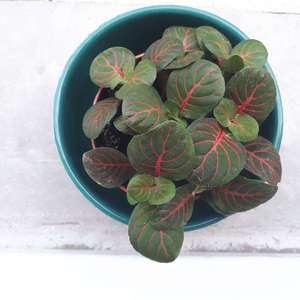

0
0
Fion:Fittonia verschaffeltii.
Woody W:Fittonia verschaffeltii var.pearcei
文章
Miss Chen
2018年06月05日

Description: This herbaceous perennial plant consists of a rosette of leaves about 6" across, from which flowering stalks develop directly from the rootstock. Each blade of a basal leaf is up to 3½" long and 2½" across, while its petiole is about as long as the blade. The leaf blades are deltoid-cordate to oval-cordate, glabrous or nearly so, palmately veined, and crenate along their margins. The petioles are rather stout, pale green, hairless or nearly so, and widely spreading to ascending. The ascending flowering stalks are about as tall as the leaves; the stalks are pale green to pale reddish green and hairless.
Each stalk nods downward at its apex and terminates in a single flower. Each flower is about ½–¾" across, consisting of 5 pale blue-violet petals and 5 pale green sepals. The lower lateral petals are bearded with white hairs near the throat of the flower; the lowest petal and upper lateral petals are beardless. The throat of the flower is white, and there are dark blue-violet veins on the lowest petal and lower lateral petals that function as nectar guides to flower-visiting insects. Sometimes the white throat of the flower is surrounded by a band of blue-violet that is slightly darker than the outer regions of the petals. At the back of each flower, there is a short blunt nectar spur. The blooming period occurs during mid- to late spring and lasts about 1½ months. Somewhat later, cleistogamous flowers are produced that are self-fertile; they lack showy petals. Each fertilized flower is replaced by a tripartite seed capsule. The small seeds in each capsule are dull light brown with oily elaisomes; they are ejected mechanically from the capsule. The root system consists of a short crown with thick rhizomes and fibrous roots. Reproduction occurs through the seeds and rhizomes.
Cultivation: The preference is light shade to partial sun, moist to mesic conditions, and a fertile loamy soil with abundant organic material.

Range & Habitat: The native Missouri Violet occurs occasionally throughout Illinois; it is more common in the southern half of the state than the northern half (see Distribution Map). Habitats include deciduous woodlands (bottomland or floodplain), woodland openings, areas along woodland paths, and rocky bluffs. The Missouri Violet doesn't occur in sunny areas to the same extent as Viola sororia sororia (Common Blue Violet) and its various color forms.
Faunal Associations: The flowers occasionally attract bees and other insects, including the oligolectic Andrena viola (Violet Andrenid Bee). These insects suck nectar from the flowers, although some of the bees collect pollen. The caterpillars of several Fritillary butterflies (Speyeria spp., Boloria spp., & Eupoieta claudia) eat the foliage of Viola spp. (Violets). Because of their oily elaisomes, the seeds are distributed in part by ants. The seeds of Violets are eaten to a limited extent by various birds and small rodents, including the Wild Turkey, Bobwhite, Mourning Dove, and White-Footed Mouse. The Wild Turkey also eats the foliage and fleshy rhizomes. Mammalian herbivores eat the foliage to a limited extent.
Photographic Location: Along a woodland path at Busey Woods in Urbana, Illinois.
Comments: The Missouri Violet is very similar to Viola sororia sororia (Common Blue Violet). It differs from the latter species in the following ways: 1) the Missouri Violet has leaf blades that are more deltoid (triangular-shaped) and less rounded than the blades of the Common Blue Violet, 2) the flowers of Missouri Violet are a lighter shade of blue-violet and slightly smaller in size than the flowers of the Common Blue Violet, and 3) the seeds of Missouri Violet are a lighter shade of brown. The Missouri Violet is even more similar to Viola sororia priceana (Confederate Violet) because their flowers are about the same shade of blue-violet. However, the Confederate Violet has more rounded leaf blades, seeds that are a darker shade of brown, and it is often found in close proximity to the Common Blue Violet, with which it freely interbreeds. The Missouri Violet is classified as a variety of Viola sororia by some authorities, in which case its scientific name is Viola sororia missouriensis.
Each stalk nods downward at its apex and terminates in a single flower. Each flower is about ½–¾" across, consisting of 5 pale blue-violet petals and 5 pale green sepals. The lower lateral petals are bearded with white hairs near the throat of the flower; the lowest petal and upper lateral petals are beardless. The throat of the flower is white, and there are dark blue-violet veins on the lowest petal and lower lateral petals that function as nectar guides to flower-visiting insects. Sometimes the white throat of the flower is surrounded by a band of blue-violet that is slightly darker than the outer regions of the petals. At the back of each flower, there is a short blunt nectar spur. The blooming period occurs during mid- to late spring and lasts about 1½ months. Somewhat later, cleistogamous flowers are produced that are self-fertile; they lack showy petals. Each fertilized flower is replaced by a tripartite seed capsule. The small seeds in each capsule are dull light brown with oily elaisomes; they are ejected mechanically from the capsule. The root system consists of a short crown with thick rhizomes and fibrous roots. Reproduction occurs through the seeds and rhizomes.
Cultivation: The preference is light shade to partial sun, moist to mesic conditions, and a fertile loamy soil with abundant organic material.

Range & Habitat: The native Missouri Violet occurs occasionally throughout Illinois; it is more common in the southern half of the state than the northern half (see Distribution Map). Habitats include deciduous woodlands (bottomland or floodplain), woodland openings, areas along woodland paths, and rocky bluffs. The Missouri Violet doesn't occur in sunny areas to the same extent as Viola sororia sororia (Common Blue Violet) and its various color forms.
Faunal Associations: The flowers occasionally attract bees and other insects, including the oligolectic Andrena viola (Violet Andrenid Bee). These insects suck nectar from the flowers, although some of the bees collect pollen. The caterpillars of several Fritillary butterflies (Speyeria spp., Boloria spp., & Eupoieta claudia) eat the foliage of Viola spp. (Violets). Because of their oily elaisomes, the seeds are distributed in part by ants. The seeds of Violets are eaten to a limited extent by various birds and small rodents, including the Wild Turkey, Bobwhite, Mourning Dove, and White-Footed Mouse. The Wild Turkey also eats the foliage and fleshy rhizomes. Mammalian herbivores eat the foliage to a limited extent.
Photographic Location: Along a woodland path at Busey Woods in Urbana, Illinois.
Comments: The Missouri Violet is very similar to Viola sororia sororia (Common Blue Violet). It differs from the latter species in the following ways: 1) the Missouri Violet has leaf blades that are more deltoid (triangular-shaped) and less rounded than the blades of the Common Blue Violet, 2) the flowers of Missouri Violet are a lighter shade of blue-violet and slightly smaller in size than the flowers of the Common Blue Violet, and 3) the seeds of Missouri Violet are a lighter shade of brown. The Missouri Violet is even more similar to Viola sororia priceana (Confederate Violet) because their flowers are about the same shade of blue-violet. However, the Confederate Violet has more rounded leaf blades, seeds that are a darker shade of brown, and it is often found in close proximity to the Common Blue Violet, with which it freely interbreeds. The Missouri Violet is classified as a variety of Viola sororia by some authorities, in which case its scientific name is Viola sororia missouriensis.
0
0
文章
Miss Chen
2018年06月04日

Description: This herbaceous perennial plant is about 1-2' tall. In mature plants, the central stem divides into 2 or 3 side stems, while immature plants usually remain undivided. The upper portion of each plant tends to nod downward because of the weight of the leaves and flowers. The terete stems are glabrous and glaucous; they are light green or pale reddish green. The alternate leaves are up to 6" long and 2" across. They are oblong-ovate to elliptic, smooth along their margins, and parallel-veined. The base of each leaf is perfoliate – it completely surrounds the stem. The upper surface of each leaf is pale green to green and glabrous, while the lower surface is white to greenish white and finely short-pubescent (canescent). In mature plants, each side stem terminates with a single flower that has an elongated bell-like shape.
The flowers are about 1-2" long and they hang downward from slender pedicels about 1" long. The pedicels are similar to the stems, except they are more slender. Each flower consists of 6 pale yellow to yellow tepals, 6 stamens, and a pistil with a tripartite style. The slender tepals are slightly twisted and greenish toward the base of the flower, while their interior surface is smooth and hairless. The yellow anthers of the stamens are large and elongated, but they remain mostly hidden by the tepals. The blooming period occurs during the mid-spring and lasts about 2 weeks. The flowers are slightly fragrant. Each flower is replaced by a 3-celled seed capsule that is obovoid in shape with 3 rounded lobes and a rounded tip; each cell of this capsule contains several seeds. The root system is rhizomatous, from which vegetative offsets are often produced. This plant occasionally forms colonies.

Cultivation: The preference is dappled sunlight during the spring and light shade during the summer. The soil should be moderately moist and loamy with a layer of decaying leaves. It is best to locate this plant underneath a deciduous tree that does not cast heavy shade during the summer. It is easier to start new plants from divisions, rather than by seeds.
Range & Habitat: The native Large-Flowered Bellwort occurs occasionally in most areas of Illinois, except for a few counties in southern part of the state (see Distribution Map). Populations of this wildflower have declined somewhat because of deer-browsing, habitat destruction, invasion of various non-native shrubs, and invasion of Garlic Mustard (Alliaria petiolata). Habitats include mesic deciduous woodlands, wooded slopes, large river banks in wooded areas, and edges of shady seeps. The presence of this plant in a deciduous woodlands is an indication that much of the original ground flora is still intact.

Faunal Associations: Bumblebees, mason bees (Osmia spp.), Halictid bees (Halictus spp., Lasioglossum spp.), and Andrenid bees (Andrena spp.) suck nectar or collect pollen from the flowers. The seeds are distributed by ants because of their attached elaiosomes (small food bodies). The foliage is heavily grazed by deer; this species declines in abundance when there is an overpopulation of deer in wooded areas. The foliage is probably vulnerable to other mammalian herbivores as well.
Photographic Location: A deciduous woodland along a river bank at Allerton Park in Piatt County, Illinois.

Comments: The flowers are rather shy and often hide behind the leaves. The foliage of Large-Flowered Bellwort (Uvularia grandiflora) is attractive and resembles the foliage of Polygonatum commutatum (Smooth Solomon's Seal). However, the leaves of the latter species are sessile or clasping, while the leaves of Large-Flowered Bellwort are perfoliate. The only other species in this genus that occurs in Illinois (the southern part only) is Uvularia sessilifolia (Sessile-Leaved Bellwort). As the name suggests, the leaves of this species are sessile, rather than perfoliate, and its flowers are a little smaller than those of Large-Flowered Bellwort. The 3-celled seed capsules of this species are sharply lobed (even winged), while the corresponding lobes of Large-Flowered Bellwort are well-rounded. Another species in this genus, Uvularia perfoliata (Perfoliate Bellwort), occurs in areas to the east of Illinois. This species has perfoliate leaves like Large-Flowered Bellwort. However, its seed capsules are truncated at their tips and its tepals have glandular hairs on the interior surface. Large-Flowered Bellwort has seed capsules with rounded tips and its tepals are smooth on the interior surface.
The flowers are about 1-2" long and they hang downward from slender pedicels about 1" long. The pedicels are similar to the stems, except they are more slender. Each flower consists of 6 pale yellow to yellow tepals, 6 stamens, and a pistil with a tripartite style. The slender tepals are slightly twisted and greenish toward the base of the flower, while their interior surface is smooth and hairless. The yellow anthers of the stamens are large and elongated, but they remain mostly hidden by the tepals. The blooming period occurs during the mid-spring and lasts about 2 weeks. The flowers are slightly fragrant. Each flower is replaced by a 3-celled seed capsule that is obovoid in shape with 3 rounded lobes and a rounded tip; each cell of this capsule contains several seeds. The root system is rhizomatous, from which vegetative offsets are often produced. This plant occasionally forms colonies.

Cultivation: The preference is dappled sunlight during the spring and light shade during the summer. The soil should be moderately moist and loamy with a layer of decaying leaves. It is best to locate this plant underneath a deciduous tree that does not cast heavy shade during the summer. It is easier to start new plants from divisions, rather than by seeds.
Range & Habitat: The native Large-Flowered Bellwort occurs occasionally in most areas of Illinois, except for a few counties in southern part of the state (see Distribution Map). Populations of this wildflower have declined somewhat because of deer-browsing, habitat destruction, invasion of various non-native shrubs, and invasion of Garlic Mustard (Alliaria petiolata). Habitats include mesic deciduous woodlands, wooded slopes, large river banks in wooded areas, and edges of shady seeps. The presence of this plant in a deciduous woodlands is an indication that much of the original ground flora is still intact.

Faunal Associations: Bumblebees, mason bees (Osmia spp.), Halictid bees (Halictus spp., Lasioglossum spp.), and Andrenid bees (Andrena spp.) suck nectar or collect pollen from the flowers. The seeds are distributed by ants because of their attached elaiosomes (small food bodies). The foliage is heavily grazed by deer; this species declines in abundance when there is an overpopulation of deer in wooded areas. The foliage is probably vulnerable to other mammalian herbivores as well.
Photographic Location: A deciduous woodland along a river bank at Allerton Park in Piatt County, Illinois.

Comments: The flowers are rather shy and often hide behind the leaves. The foliage of Large-Flowered Bellwort (Uvularia grandiflora) is attractive and resembles the foliage of Polygonatum commutatum (Smooth Solomon's Seal). However, the leaves of the latter species are sessile or clasping, while the leaves of Large-Flowered Bellwort are perfoliate. The only other species in this genus that occurs in Illinois (the southern part only) is Uvularia sessilifolia (Sessile-Leaved Bellwort). As the name suggests, the leaves of this species are sessile, rather than perfoliate, and its flowers are a little smaller than those of Large-Flowered Bellwort. The 3-celled seed capsules of this species are sharply lobed (even winged), while the corresponding lobes of Large-Flowered Bellwort are well-rounded. Another species in this genus, Uvularia perfoliata (Perfoliate Bellwort), occurs in areas to the east of Illinois. This species has perfoliate leaves like Large-Flowered Bellwort. However, its seed capsules are truncated at their tips and its tepals have glandular hairs on the interior surface. Large-Flowered Bellwort has seed capsules with rounded tips and its tepals are smooth on the interior surface.
0
0





